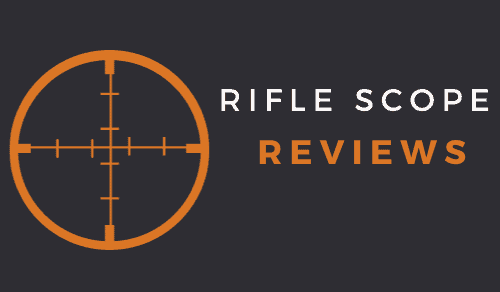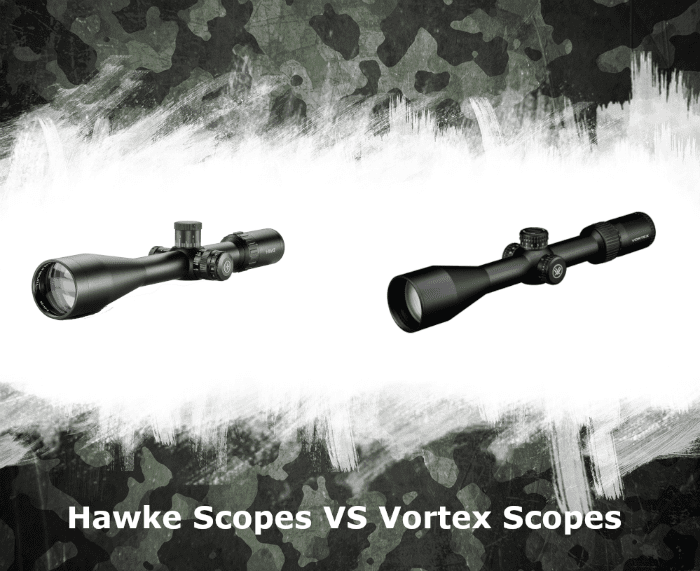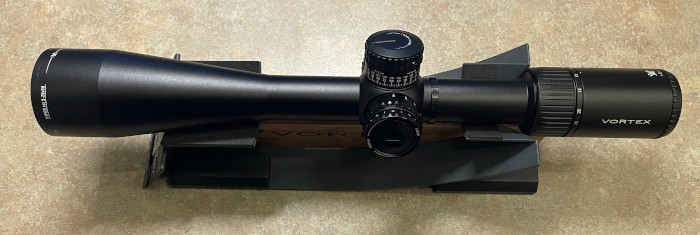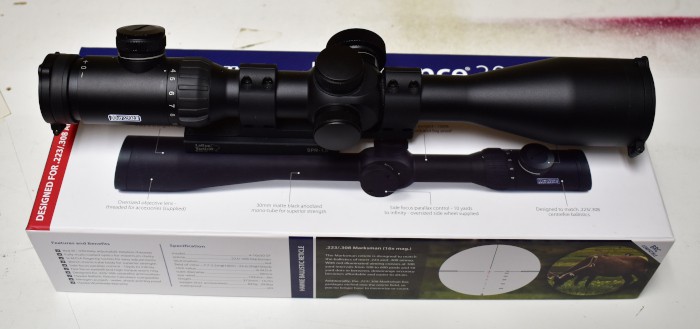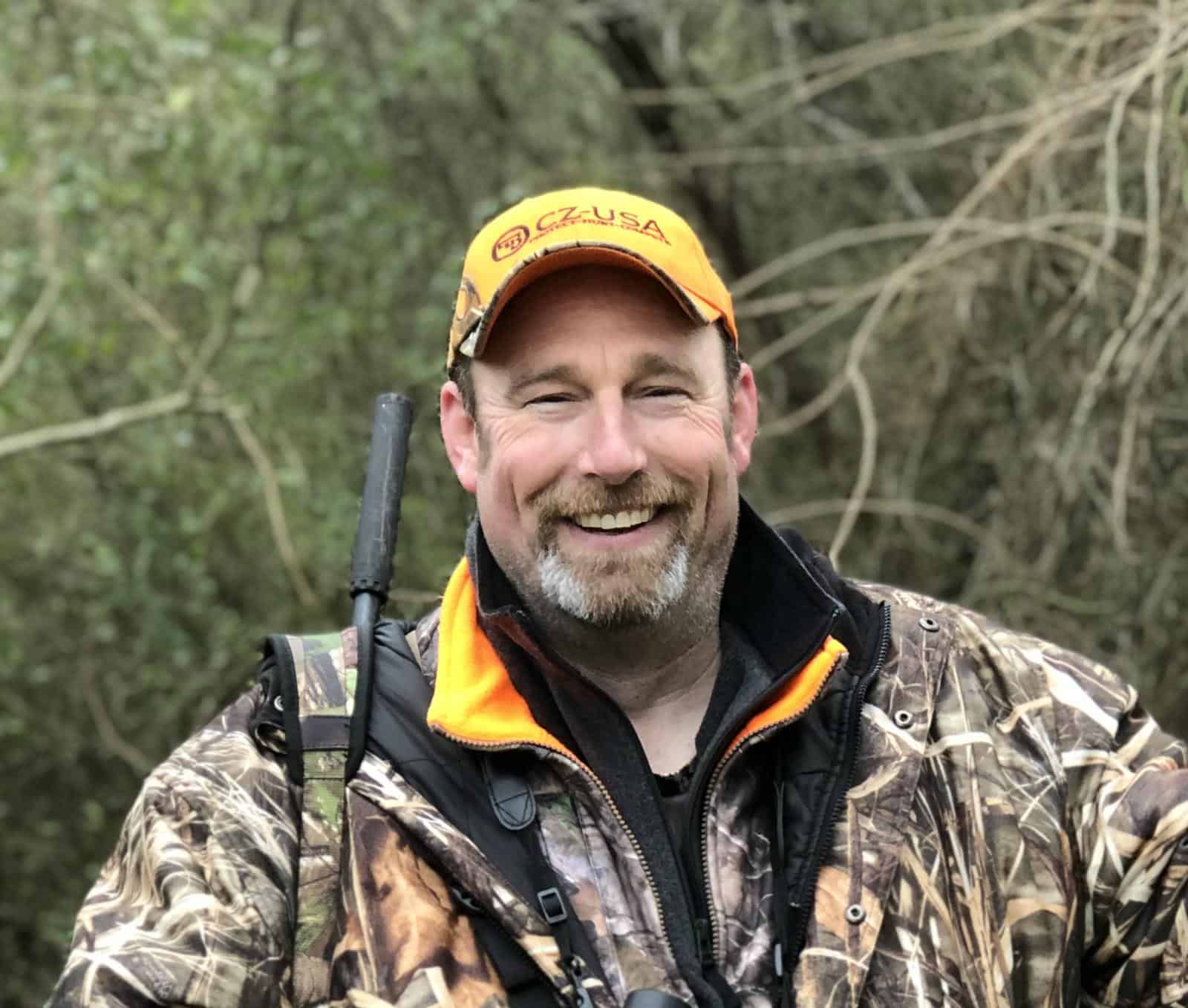As an Amazon Associate I earn from qualifying purchases. Amazon and the Amazon logo are trademarks of Amazon.com, Inc, or its affiliates.
At my day job, it is very common to have customers ask for a comparison of different rifle scope brands and different scope models. So I finally decided to integrate some of these optical comparison requests into the site. Today’s topic is a comparison of scopes between Hawke Optics vs Vortex Optics.
Both of these optical brands offer a variety of optical products, including:
- Spotting scopes
- Riflescopes
- Binoculars
- Red dot sights
Vortex is the better known and more popular brand, but Hawke Optics is still growing its presence in the United States. While Vortex offers a broader line of optical products, Hawke features some attractive scope options that Vortex does not.
Brand Background
Before I get too far along in the comparison, let’s take a second and do a brief overview of each scope brand:
Hawke Optics
Hawke Optics was started in 1978 and is based in Woodbridge, England. The company was initially established in the founder’s garage and has expanded into a global source of sporting optics.
Being based in the UK, Hawke first established a presence in the UK’s air gunning community by offering several versions of a dedicated air rifle or air gun scope. From that point, Hawke began to expand into other parts of the sporting optics market and currently offers riflescopes to fit almost any need on any budget.
Today, Hawke Optics offers 93 different scope models for hunting, air gunning, and target shooting.
Vortex Optics
Vortex Optics may be the fastest growing optical brand in the business. Founded in 2002, Vortex has grown by leaps and bounds over the last 20 years. This growth was fueled by their diverse riflescope lines, outstanding warranty (which may be the most comprehensive in the optics business), quality and durability, and reasonable pricing model.
Vortex features an extremely diverse scope line that covers everything from entry-level optics all the way up to top-shelf long range models.
In addition to rifle scopes, Vortex also offers several other quality-made optical products like binoculars, spotting scopes, red dots, etc.
Currently, with all the different reticle choices, Vortex Optics offers ninety-five different scope models.
Vortex Scopes vs. Hawke Scopes
My preferred format for optical brand comparisons is as follows:
- Comparison of Scope Offerings
- Comparison of Optical Quality
- Reticle Options
- Warranty Programs
- Country of Manufacture
- Costs
- Value
In my opinion, those comparison points offer enough data to get a rough idea of how one optical brand stacks up against the other.
Keep in mind that the information provided here is based on my opinions and experiences, having extensively dealt with both brands.
Let’s get started.
Comparison of Scope Offerings
For this specific criteria, I’m comparing the field of scope models offered by each optical brand. Since these two companies don’t match up as equals in terms of the overall price points, the easiest way to break down these criteria is through the following broad categories:
- Entry-level
- Mid-Range
- High End
- Specialty Scope models
Entry-level (Up to $550)
Typically, I use a $350 MSRP price point as the top end of the entry-level classification. However, in this instance, I’m classifying entry-level scopes as any with an MSRP price up to $550. I made this change as Hawke Optics’ entry-level line of riflescopes is extremely broad, with top-end models in their entry-level line having a max MSRP of $550.
Vortex features forty-three scope models covering five different scope lines with an MSRP under $550. Those Vortex scope lines include:
- Sonora
- Copperhead
- Crossfire II
- Diamondback
- Diamondback Tactical
As you can see, the Vortex Crossfire II series is the most extensive offering in this group, with twenty-six scope options under the $550 MSRP price point.
In terms of power magnification ranges, the Vortex optics in this group range from 1-4×24 to a maximum of 6-24×50. The bulk of the models in this category are in the 3-9 and 4-12 power.
While Vortex offers a mix of 30mm and inch models in this category, the bulk of the scope offerings is 1-inch models. Vortex also offers a combination of second and first focal plane options in this category, but there are more SFP options than FFP choices.
Vortex offers models with side focus parallax corrections and adjustable objective parallax corrections within this grouping.
The Vortex scopes in this group will predominantly be geared towards hunting, plinking, and target shooting, with some long-range shooting as well.
Hawke offers sixty-one scope models within two scope series with an MSRP at or under $550. The two Hawke scope families meeting these criteria are:
- Vantage
- Endurance
The Vantage line of riflescopes is considered Hawke’s entry-level series, and this line is extensive, with fifty-three total models.
In terms of power magnification ranges, the optics meeting this criteria range from fixed 4x power up to a maximum of 6-24x50mm. As a result, the Hawke optics in this category will cover almost every type of shooting or hunting situation commonly encountered.
Hawke also offers sub-categories within each line that define the tube size, reticle options, and focal plane. For example, they feature an entire sub-group of optics made with a 1-inch tube and another group made with 30mm tubes. In addition, they also use sub-groups to identify models with AO, first focal plane, and illuminated reticle options.
Which is Better?
Just looking at the diversity of the scopes in this category, I’d give the edge to Hawke, and here’s why:
Hawke offers three fixed 4x power scopes, where Vortex doesn’t offer any fixed power options. In addition, Hawke offers a fixed 4x scope with an adjustable objective, which is fantastic as the lack of parallax adjustment has always been the one weak spot of fixed power scopes.
Hawke offers a wider variety of reticle options in this price range, including several caliber-specific reticles, including
- Dedicated rimfire reticles (22LR, 17 HMR, and 22 Mag)
- 223
- 308
In addition to the caliber-specific reticles, Hawke also features a broader range of illuminated reticle options than Vortex.
The one area where Vortex has an advantage here are FFP options. Vortex offers four different FFP scopes in this price range, whereas Hawke only offers two FFP models.
Another area where Hawke has a slight edge over Vortex in this category is power magnification choices. Simply put, Hawke offers a broader range of magnification options compared to Vortex. For example, Vortex only offers one 4-16 power scope in this price range, while Hawke offers eight 4-16 optics, including one in FFP.
Mid-Range ($501 to $1000)
In my opinion, the mid-range market in the sporting optics industry is the most competitive part of the industry. It used to be the entry-level market, but the mid-range market has grown exponentially over the last few years.
For the mid-range category, I’m using an MSRP price range of $501 up to $1000. Since I had to adjust the entry-level category numbers to accommodate the Hawke line, I made similar adjustments in the mid-range category.
Vortex offers 22 scopes across six different series that feature an MSRP between $551 to $1000. Those riflescope models are in the following Vortex series:
- Venom
- Strike Eagle
- Viper
- Viper HS
- Viper HSLR (All the HSLR models, except the 6-25×50 FFP model, which exceeds the $1000 MSRP criteria)
- Viper HST
As far as power magnification ranges, the Vortex optics in this group range from 1.75-5×32 to a maximum of 5-25×56. Most of the Vortex optics in this category are more on the higher magnification side of things, focusing on the 4-16 and up magnification range.
Vortex transitions from 1-inch scopes over to 30mm models in the mid-range category, including one 34mm model. In fact, Vortex only offers a few select 1-inch scopes in this price range. In addition, the recommended scope usage begins to change as well. The Vortex optics in this group are more geared towards hunting, long-range hunting, and long-range shooting. A few of the models in this group are designed as short-range/close quarters optics for the AR platform.
Of the 19 riflescopes in this category from Vortex, 16 are second focal plane models, and three are first focal plane versions.
As expected, the optical quality in this category is better than the optical quality seen in their entry-level offering. In addition to the higher optical quality, nearly every Vortex riflescope in this price range comes standard with side focus parallax adjustments. Unfortunately, Vortex does not offer any adjustable objective options in the mid-range category.
Hawke offers 31 riflescope models across three different Hawke scope families with an MSRP from $550 to $1000. Those models are in the following scope series:
- Endurance (only specific models)
- Sidewinder (all the scopes in this series)
- Frontier (only specific models)
From an adjustable magnification perspective, Hawke features optics that range from 1-6×24 up to a maximum range of 8-32×56. Most of the Hawke riflescopes in this category are geared towards hunting and long distance shooting, with a select few optics being offered for AR-based short range and close quarter shooting.
Nearly all the Hawke optics in this price range are built in either 30mm. Hawke only offers a select few 1-inch models in this category. Like Vortex, all the Hawke optics in this category feature better optical quality than the entry-level models in the Hawke family.
The bulk of the scopes in this category come from the Hawke Sidewinder series, which is Hawke’s most popular series. Sidewinder optics account for nearly half of the optics in this category.
Also, like Vortex, Hawke only offers optics with a side focus parallax adjustment in this price range.
And the Winner is…
Choosing a winner in this category is more difficult because it’s one of Vortex’s strongest selling categories, but Hawke also has some unique benefits.
Vortex is a more prominent, more established brand in the US compared to Hawke, so they sell far more optics than Hawke in the $550 to $1000 price point.
However, Hawke offers nearly twice the number of different scopes in this category compared to Vortex and nearly twice as many reticle options in this category as well. In addition, Hawke offers more illuminated reticle choices in this space (if reticle illumination is essential to you).
I’d probably rate this one a tie since Vortex is strong in this area from a market perspective, but Hawke has a broader product offering.
Upper Mid-Range Scopes ($1001 – $1500)
The upper mid-range category of optics covers models with an MSRP between $1001 and $1500. Like the basic mid-range category, I discussed previously, this category or market space is also fairly competitive. However, you begin to see the number of scope models in this space decrease. For example, Hawke Optics has a few models in this price range, but then they top out as they don’t have any scope offerings priced above the $1500 MSRP point.
Scopes in this range begin to specialize a bit where they are manufactured specifically for situations like long range hunting, long range shooting, or close-quarters combat-style shooting for speed and precision.
Vortex features a total of six scope models in one Vortex series that fall in the $1001 to $1500 MSRP price range. Those six models are in the following series:
- Viper HSLR (However, there is only one scope model, the 6-24×50 FFP version, that qualifies for this category)
- PST Gen II (all the Vortex PST GEN 2 scope models, except for the 1-6×24 model, fall into this category)
Within those six models, the lowest magnification is 2-10×32, and the highest magnification range is 5-25×50. With the Vortex optics in this price range, you begin to also the ability to integrate a custom turret from Kenton turrets. Vortex has an integration deal with Kenton, where they produce aftermarket, drop-in custom turrets for the more higher-end Vortex scopes.
Switching over to the Hawke line of scopes, Hawke offers seven models that fit into the upper mid-range classification, and all those models are in Hawke’s top-of-the-line Frontier series. The upper mid-range scopes are their top tier of scope offering for Hawke.
Within those seven optics, the lowest magnification range is 3-15×50, while the highest magnification power is 5-30×56.
With both scope brands, the quality of the optics and features increases with the cost. Most all the optics in both brands are 30mm, with a few 34mm models. Most optics in this price range are geared towards long-range, and most feature a magnification range over 4-16.
The Vortex offering in this price range features a combination of SFP and FFP models, while all the Hawke models in this category are FFP only.
Having looked through most all the models in this category across both brands, I’d give the edge in optical quality to Vortex as I believe that their optics are slightly better in this price range.
Which is Better?
I would give the edge to Vortex in this category, but it’s predominantly based on one issue: Hawke does not offer any SFP scopes in this price range.
As mentioned before, I would give the Vortex a slight edge here in optical quality, but Hawke is a viable contender if you’re strictly shopping for an FFP optic.
Top End Scopes ($1500 and up)
I can tell you upfront that Vortex wins this category because Hawke does not currently have any scopes priced in this category.
Vortex features eighteen scope models spanning five different series with an MSRP of $1500 or higher. Those eighteen riflescopes come from the following series:
- Golden Eagle HD
- Razor HD LHT
- Razor HD Gen-II-E
- Razor HD Gen II
- Razor HD Gen III
The Vortex optics in this category are highly specialized, with models being manufactured for:
- Long Distance Shooting
- Long to Mid Distance Hunting
- Tactical & Tactical Precision Applications
All the optics in this category are top-end models that will optically compete with any US-based scope brand and some European-based optics.
All the optics featured in this group are built on a 30mm or 34mm tube, and most are FFP-based.
And the Winner is…
Who am I kidding here? Vortex is the only manufacturer in this category, so they win by default.
To be honest, I am not sure that Hawke would even compete well in this category since it is a strong selling area for Vortex. In addition, there is a typically substantial difference in optical quality and performance between a $1500 optic and a $3500+ optic.
Specialty Scope models
Specialty scopes are models that are built for one specific purpose or use. Examples of specialty optics include:
- Dedicated shotgun scopes
- Dedicated rimfire models
- Scout scopes
Let’s look at each brand in more detail:
Vortex
Vortex offers a couple of specialty scope models, including:
- Scout
- Rimfire (two models)
- Crossbow
In addition, Vortex has introduced a specific scope for the straight-wall calibers (350 Legend, .450 Bushmaster, etc.) with a straight-wall-based BDC reticle.
Hawke
Hawke actually got their start in the sporting optics industry in a specialty scope market for air guns. Hawke offers the following specialty scope models:
- Airmax air gun models (which include 14 separate models)
- XB Crossbow models (which consists of five scope models in 1 inch and 30mm options)
In addition to those specific scopes, Hawke also offers several reticle choices that are caliber specific. Those include the following calibers:
- 22LR HV (High Velocity)
- 22LR
- 22 WMR
- 17 Mach 2
- 17 HMR
- .223
- .308
- .350 Legend
And the Winner is…
Hawke wins this category in terms of specialty or purpose-driven optics as they have a much larger offering of specialty and caliber-specific optic choices.
They are among the few optical brands on the market that I’ve seen feature crossbow scope options available in 1-inch and 30mm choices.
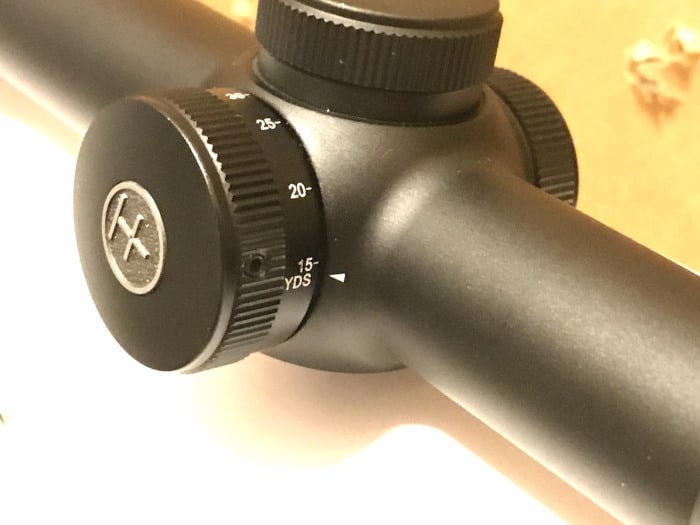
Comparison of Optical Quality
As I’ve mentioned before in other blog posts, I find the optical quality to be challenging to assess for two reasons:
- The evaluation basis is entirely opinion based on one’s own personal perspective and experience.
- I try to qualify my opinions somewhat based on price/costs because these comparisons are rarely an apples-to-apples situation.
In the entry-level category, I would rate Hawke as having slightly better optics with a bit better eye relief across the board. However, as you move up to the higher magnification ranges in the Hawke optics, you begin to see some flare and clarity issues along the very edges of the image.
In the mid-level category, I would score give Vortex a slight edge in the optical quality as, across the board, their glass seems just a bit brighter and clearer. However, Hawke offers better (as in less critical) eye relief on most models. In addition, Hawke is really focusing on growth in this market sector, so they have upped their mid-price point game.
Comparing the glass quality in the upper mid-range category, I would rate Vortex as the winner as their optics are noticeably better. Within the Vortex line of scopes, there is a very noticeable jump in optical quality going up through their product line. However, with Hawke, there does not seem to be as noticeable an improvement in their glass. While the quality of the Hawke lenses definitely improves, especially when you move from the Endurance models to the Sidewinder optics, it’s still not quite as crisp or clear as seen in Vortex.
Vortex is the clear winner within the top-end classification as Hawke does not currently offer any riflescopes priced above $1500. In addition, to be quite strong in this particular segment of the market, Vortex also has models priced all the way up to $4000. However, to be honest, I’m not entirely convinced that Hawke will ever compete well in this category, and I’ll dive more into why down below when discussing where these brands are manufactured.
Reticle Options
A rifle scope reticle is one of those features that can make or break a scope purchase. Unfortunately, even in situations when the optic matches a customer’s needs perfectly, the reticle option may be the one factor that deters the purchase. And, for the record, I am no different as I’m very particular when it comes to reticle styles.
Let us talk about the reticle choices for these two optic manufacturers across each of the price ranges.
Entry Level Reticle Options - MSRP up to $550 | |
Vortex Reticles | Hawke Reticles |
Dead-Hold BDC (MOA) Straight Wall BDC (MOA) V-Plex (MOA) V-Brite (MOA) EBR-2C (MOA) EBR-2C (MOA) VMR-1 (MOA) | Rimfire 22LR Rimfire 22R HV (High Velocity) Rimfire 22 WMR Rimfire 17 Mach 2 Rimfire 17 HMR .223 .308 L4A Dot 10x 1/2 Mil Dot Mil-Dot 30/30 Center Cross 30/30 Duplex 1/2 Mil-Dot FFP Half Mil Dot |
The DeadHold BDC and V-Plex are the most common Vortex reticle options in this category.
In comparison, Hawke offers a total of 13 reticle choices in this price range, including several caliber-specific options. In addition, almost all of those 13 reticles are also available in an illuminated version.
Mid Level Reticle Options - MSRP from $550 to $1000 | |
Vortex Reticles | Hawke Reticles |
EBR-7C (MOA) EBR-7C (MRAD) Dead-Hold BDC (MOA) Mil-Dot (MOA) V-Plex (MOA) XLR (MOA) EBR-4 (MOA) EBR-4 (MRAD) VMR-1 (MOA) VMR-1 (MRAD) EBR-8 (MOA) AR-BDC3 (MOA) | .223 Marksman .308 Marksman L4A Dot LRC LR DOT Tactical Dot 10x Half Mil 20x Half Mil SR Pro II FFP Half Mil FFP MOA Mil Pro Circle Dot |
Within the mid-range grouping, Vortex features twelve different reticle choices, with most being designed for long range or long distance shooting.
Hawke offers thirteen different reticle choices in the mid-range pricing. Like Vortex, most of those reticle options are built or geared towards long distance shooting.
Upper Mid-Range Reticle Options - MSRP Between $1000 to $1500 | |
Vortex Reticles | Hawke Reticles |
XLR (MOA) EBR-2C (MOA) EBR-2C (MRAD) EBR-7C (MOA) EBR-7C (MRAD) EBR-4 (MOA) | FFP MOA Pro Ext FFP MIL Pro Ext FFP MIL Mil Pro Circle Dot LR Dot L4A Dot Tactical Dot |
In the upper mid-level scope options (with an MSRP range from $1000 to $1500), Vortex offers six different reticle choices, and all are focused on long range, hunting, or precision tactical style shooting.
In this price range, Hawke features eight different reticle options, and all are geared towards long distance shooting as well.
Top End Reticle Options | |
Vortex Reticles | Hawke Reticles |
ECR-1 (MOA) SCR-1 (MOA) XLR-2 (MOA) XLR-2 (MRAD) HSR-5i (MOA) HSR-5i (MRAD) G4i BDC (MRAD) JM-1 BDC VMR-2 (MOA) VMR-2 (MRAD) EBR-7C (MOA) EBR-7C (MRAD) HORUS H59 HORUS TREMOR3 EBR-7D (MOA) EBR-7d (MRAD) EBR-9 (MOA) EBR-9 (MRAD) | |
As you can see from the table above, Vortex features 18 different reticle choices in this price range, while Hawke has no reticles in this range as they don’t offer an optic costing $1500 or more.
This comparison is a tight race as both brands offer various reticle choices across all different scope models. However, if I had to pick a winner, I’d give the edge to Hawke as they feature a larger number of reticle options across all their scope models compared to Vortex. In addition, nearly every Hawke reticle is available in an illuminated version.
Warranty Programs
I’ve always considered the warranty program on scopes to have significant value, especially if you run into issues with the optic. Since working on scopes requires special tools, equipment, and knowledge, most riflescope repair is not cheap. Having a good warranty in place offers some coverage if the riflescope has issues.
Let’s look at the warranty program of each manufacturer in detail:
Vortex Optics Warranty
Without a doubt, Vortex offers one of the best (and some would argue, the #1) warranty programs in the sporting optics industry. Vortex features their “VIP Lifetime Warranty,” which is a very straightforward and comprehensive program. If the optic breaks, fails, is damaged, etc., they will either repair it, replace it, or replace it with a comparable model.
Here’s the best part: Vortex doesn’t require a warranty registration, proof of purchase, or receipts to engage the warranty. Plus, their warranty program is fully transferable, so it doesn’t matter if you’re the original purchaser or the fifth owner; it’s covered.
Unlike some scope manufacturers, the Vortex warranty is not limited by a certain number of years or a time frame. Instead, the coverage includes the life of the product.
And here’s something else that I haven’t seen covered under any other optical warranty: The Vortex warranty is valid and in effect, even if you paint the optic or have it coated with a finish like Durakote or Cerakote.
Hawke Optics Warranty
The Hawke warranty program is called their “No-Fault Lifetime Warranty,” and it offers a lifetime warranty on all their rifle scopes. However, that warranty comes with the following limitations:
(1) The No-Fault Lifetime warranty program is only valid on products purchased after January 2018. Any product purchased before that date is covered under Hawke’s original warranty.
(2) The optic must be purchased from an authorized Hawke retailer to be covered.
(3) This warranty is only valid for the original owner, and the product has to be accompanied by a receipt or a prior warranty registration with Hawke.
In addition, the warranty wording implies that the warranty does not cover a scope that has been painted or coated in any way.
Best Warranty Coverage
While the Hawke warranty isn’t bad, it’s typical of the warranty restrictions seen in the optical industry these days. The fact that it won’t cover a secondary owner is a real bummer, especially if you routinely purchased preowned scopes.
Vortex is the obvious winner here as their warranty program is more comprehensive, easier to engage, and more customer-friendly.
Country of Manufacture
For some prospective buyers, where a product is produced or manufactured plays a significant role in the buying decision. For others, it may not really matter as much.
Something worth noting here: Where a product is manufactured is commonly called the source country or country of manufacture. A source country is determined based on the country where the most significant percentage of components or parts are sourced from. For example, if 65% of the components of a riflescope come from the Phillippines, then the completed scope is marked as being manufactured in the Philippines.
Within the sporting optics market, there are typically two scenarios that define where an optic is manufactured:
- The components are sourced from different countries and then assembled in an optical factory
- The entire optic, including all the components, is sourced from one country and then assembled in that country.
I mention this to help people understand that very few, and I mean very few, riflescopes are still made entirely in the United States. And by “entirely made in the United States,” I mean that all the components, including the lenses, are sourced from within the United States.
Most modern-day scope manufacturers either source the entire scope from another country or source the components from another country, then assemble the optic in the United States.
That being said, let’s look at the country of manufacture for each brand:
Vortex Optics
Vortex Optics are sourced from a few different countries, including China and the Philippines. The entry-level and lower mid-range optics come from an optical facility in China, while the upper to higher mid-level optics come from the Philippines.
The very top end of Vortex’s Razor line of scopes is assembled in the United States at the Vortex facility in Wisconsin.
If you were interested in seeing where a specific Vortex optic is made, I put together a more in-depth overview of where all the Vortex scopes are made here.
Hawke Optics
When Hawke Optics first entered the sporting optics business, its optics were predominantly sourced from Japan. However, Hawke has changed that approach as all their riflescopes are sourced from an optical facility in China.
While some scope brands aren’t really clear about where their products are made, Hawke is very clear that all their scope models are produced in China.
All Hawke riflescope models are built to Hawke’s specifications and then shipped to a Hawke facility in either the UK or the United States. They are inspected, tested, and boxed at those locations, then sent to an authorized Hawke retailer.
If you wanted to read more about Hawke’s approach to manufacturing, I wrote a more detailed post here about where Hawke Optics are manufactured.
Here’s the one potential issue I see with this approach: In my opinion, some US-based customers are only going to spend so much on an optic made in China, no matter the level of quality or performance.
I suspect that Bushnell saw the same issue with the Forge line of scopes. Those models were manufactured in either South Korea or China and featured an MSRP between $900 and $1200. The optical quality and features for this line were outstanding (perhaps the best I’ve seen yet out of SE Asia) and in line with the price tag. However, they didn’t sell very well, so Bushnell phased the Forge scope models out of production.
Scope Costs
There are some differences in costs between these two brands, especially in the mid-range and upper mid-range categories. Also, since both brands have different product offerings, there are areas where Hawke doesn’t have an optic in the Vortex price range.
Since Hawke’s Vantage entry-level series of optics features such a large number of models, there is also a broad range of MSRP pricing in this category as well. As an example, the least expensive model in the entry-level category has a $99 MSRP, while the most costly model in that series has a $549 MSRP.
The Vortex line of optics has more individual series of scopes compared to Hawke. So, to reach the minimum $550 MSRP point, a customer will have to progress through five different Vortex series.
In the mid-range price point, the cost points between the brands become more even, and the number of optics offered in that range begins to even out.
The upper mid-range price points are where the most significant changes in costs begin to show. At this point, Vortex offers scopes that cost more than Hawke.
Since Hawke doesn’t have any optics in the top-end category, there are no comparisons to make.
Hawke looks to cost slightly less than Vortex until around the $500 price point at a high-level view. From that MSRP cost up to the $1000 mark, the costs begin to even out between the brands. In the $1000 and up price range, Vortex tends to cost slightly more than the comparable Hawke scopes.
Value
Determining the better value between brands is always highly challenging because there are so many variables to consider. In addition to the cost, I always look at features, performance, reticle options, and the warranty.
Taking all those factors into account, here are my assessments of the better value:
- If you’re strictly shopping on price and want the least expensive scope between those brands, then Hawke is your best bet.
- If you’re shopping on a budget and want the best bang for your buck overall, I’d say that it’s a close call, but Hawke would be my winner.
- If you’re abnormally hard on your gear (like me), or the warranty coverage is vital to you, then I’d shop Vortex Optics.
- If you’re looking for a caliber-specific reticle or a specialty reticle, then Hawke Optics will offer you more options in that area.
- If money isn’t a factor and you want the best scope you can buy between the brands; then Vortex is the way to go.
- If you want a simple scope with as few adjustments as possible, you’re probably interested in a fixed power scope. If that’s the case, your only option between the brands will be Hawke, as Vortex no longer offers any fixed scopes.
In terms of an overall brand-to-brand comparison, I would give Vortex the edge in overall value, but the deciding factor in that decision is the strength of the Vortex warranty program. That being said, Hawke certainly offers quite a bit of value as well, especially in the entry-level optics category.
FAQS
Here are a few commonly asked questions that I see when comparing the Vortex and Hawke lines of riflescopes:
Which scope is better, Hawke or Vortex?
I’ve repeatedly stated that proclaiming one optic better than another is all relative because it’s solely based on a person’s opinions and experiences with the two products. So, instead of just making an across-the-board statement, I prefer to clarify that, in my opinion, brand xxxx is better than brand yyyy.
Vortex has several positive features that could make them the best bet, while Hawke also has several features and options that could make them the better choice.
In this case, I’d rate Vortex better overall, but that opinion is tied to Vortex’s warranty program. However, Hawke offers more features, reticle options, and power range options in many cases than Vortex at slightly lower prices, so it’s a pretty close competition about who’s better.
Rather than trying to figure out which is the best in any area, I’ve always suggested that the better approach is to determine a budget, then look at all the scope options between both brands that meet your individual needs. Next, evaluate those models at a model versus model level instead of a brand versus brand level, then make a buying decision based on your findings or specific needs.
I read somewhere that the Hawke scopes had some issues. Are you aware of any Hawke scopes problems?
I’ve owned a few Hawke scope models (some of the pics on this page are actually one of my Hawke scopes), shot under several more, and mounted too many to count. In my experience, Hawke doesn’t have any commonly noted problems and no more issues than any other optics brand (including Vortex).
Riflescopes are pieces of precision equipment with mechanical parts, screws, etc., and mechanical products can and may fail, break, or malfunction. However, I haven’t personally observed any Hawke optic’s recurring or commonly acknowledged issues.
Hopefully, you found this information helpful if you have your next scope model narrowed down to a Vortex or Hawke optic.
I’ve been working in the firearms and sporting optics industry for over 20 years, with a personal and professional interest in all things related to rifle scopes, Through a combination of work experience, formal training, and personal experiences, I have extensive experience mounting, testing, and evaluating different rifle scope models across most major optical brands.
